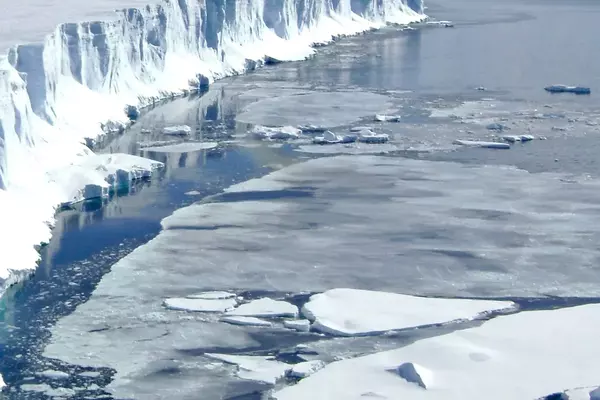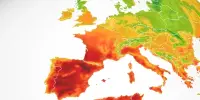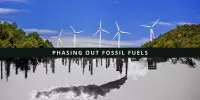The worst effects of global warming on the world’s largest ice sheet could be avoided if nations around the world meet the climate targets outlined in the Paris Agreement. That’s the recommendation of an international team of climate scientists who studied how much sea levels could rise if climate change melts the East Antarctic Ice Sheet (EAIS).
The worst effects of global warming on the world’s largest ice sheet could be avoided if nations around the world meet the climate targets outlined in the Paris Agreement. That’s the call from an international team of climate scientists, including experts from The Australian National University (ANU) and the Australian Centre for Excellence in Antarctic Science (ACEAS), who have examined how much sea levels could rise if climate change melts the East Antarctic Ice Sheet (EAIS).
According to the team’s research, published in Nature, the EAIS is predicted to add less than half a metre to sea-level rise by the year 2500 by limiting global temperatures to well below two degrees Celsius above pre-industrial levels. If the targets are not met, the EAIS alone could cause sea-level rise of up to five meters in the same time period.
If greenhouse gas emissions are drastically reduced and only a minor increase in global warming is observed, the research team predicts that the EAIS, which holds the vast majority of Earth’s glacier ice, will likely not contribute to sea-level rise this century. However, the researchers believe that sea levels will continue to rise due to unstoppable ice losses from Greenland or West Antarctica.
Already, satellite observations show signs of thinning ice and its retreat. Our models show that the rate of ocean warming will only increase dramatically if we don’t reduce greenhouse gas emissions.
Professor Nerilie Abram
The researchers warn if countries fail to meet Paris Climate Agreement targets, we risk awakening a “sleeping giant.”
“The EAIS is 10 times larger than West Antarctica and contains the equivalent of 52 metres of sea level,” co-author Professor Nerilie Abram, from the ANU Research School of Earth Sciences, said.
“If temperatures rise above two degrees Celsius beyond 2100, sustained by high greenhouse gas emissions, then East Antarctica alone could contribute around one to three metres to rising sea levels by 2300 and around two to five metres by 2500.”
According to Professor Abram, our window of opportunity to protect the world’s largest ice sheet from the effects of climate change is rapidly closing.
“A key historical lesson is that the EAIS is extremely sensitive to even minor warming scenarios. It isn’t as safe and secure as we once thought” She stated. “Achieving and reinforcing our commitments to the Paris Agreement would not only protect the world’s largest ice sheet, but would also slow the melting of other major ice sheets like Greenland and West Antarctica, which are more vulnerable to global warming.”

Co-author Professor Matthew England, from the University of New South Wales (UNSW), said the projected increase in sea-level rise from the EAIS would add to rising sea levels caused by the thermal expansion of the ocean and the melting of ice elsewhere.
“Already, satellite observations show signs of thinning ice and its retreat,” he said. “Our models show that the rate of ocean warming will only increase dramatically if we don’t reduce greenhouse gas emissions.”
According to study co-author Professor Matt King of the University of Tasmania (UTas), the study highlights how much more research is needed to learn more about East Antarctica. “We know more about the Moon than we do about East Antarctica. As a result, we do not yet fully comprehend the climate risks that will emerge from this area “According to Professor King.
The researchers looked at how the EAIS responded to warm periods in the past and analyzed projections from previous studies to determine the impact of different levels of future greenhouse gas emissions on the ice sheet by the years 2100, 2300, and 2500.
According to the most recent Intergovernmental Panel on Climate Change (IPCC) report, published last year, human activity has already increased global mean temperatures by about 1.1 degrees Celsius since pre-industrial times.
According to Professor Abram, by keeping global warming well below two degrees Celsius, we can avoid the worst-case scenarios of global warming and even avoid major losses from the EAIS.
“We used to think East Antarctica was much less vulnerable to climate change than West Antarctica or Greenland’s ice sheets, but we now know some areas of East Antarctica are already showing signs of ice loss,” she said. “This means that the fate of the world’s largest ice sheet is still very much in our hands.”
















